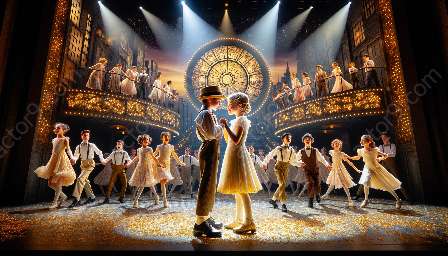Investing in a Broadway production involves various financial considerations that can greatly impact the success and profitability of the venture. Understanding these considerations is crucial for potential investors looking to engage with the exciting world of Broadway and musical theater. This comprehensive guide explores the key financial aspects of investing in a Broadway production and how these align with the broader context of Broadway performance and musical theater.
Financial Analysis of Broadway Productions
Before delving into specific financial considerations, it’s important to understand the economics of Broadway productions. Broadway shows are high-risk, high-reward ventures that require substantial upfront investment. A typical Broadway production can cost anywhere from several hundred thousand to tens of millions of dollars, with expenses including theater rental, production costs, marketing, and labor. It’s essential for investors to conduct thorough financial analysis, including a detailed budget, cash flow projections, and potential return on investment.
Risks and Returns
Investing in Broadway carries inherent risks, but successful productions can yield significant financial rewards. Factors such as production quality, marketing strategy, and audience reception all influence the potential returns. Investors must carefully assess the risk-return tradeoff and consider diversifying their investment portfolio to mitigate the specific risks associated with Broadway productions.
Funding and Financing
Securing funding for a Broadway production is a critical consideration. Investors may choose to finance a production independently or collaborate with production companies, co-producers, or institutional investors. Understanding the various funding options and their implications for ownership, control, and financial returns is crucial for making informed investment decisions.
Timing and Liquidity
Investing in Broadway entails a longer investment horizon compared to traditional financial instruments. Broadway productions often require years of development, pre-production, and a lengthy run to achieve profitability. Investors should carefully evaluate the timing and liquidity aspects, considering the potential impact on their investment portfolio and financial goals.
Strategic Decision-Making
Effective investing in Broadway productions demands strategic decision-making. Investors need to assess the artistic and commercial potential of a production, evaluate the creative team and cast, and consider factors such as genre, target audience, and market trends. Aligning financial considerations with strategic assessment is crucial for maximizing the chances of a successful investment.
Regulatory and Legal Considerations
Investing in Broadway is subject to various regulatory and legal considerations, including securities regulations, contractual agreements, and intellectual property rights. Investors must navigate these legal complexities and seek professional counsel to ensure compliance and protection of their financial interests.
Alignment with Broadway Performance Analysis
Understanding the financial considerations for investing in a Broadway production is closely linked to broader performance analysis within the Broadway industry. By evaluating financial metrics such as production costs, ticket sales, and revenue streams, investors can gain valuable insights into the financial performance of individual shows and the overall Broadway market.
Integration with Broadway & Musical Theater Landscape
Investing in Broadway productions intersects with the vibrant landscape of musical theater, encompassing a rich history, diverse genres, and global appeal. Financial considerations must resonate with the unique characteristics of musical theater, including audience preferences, cultural relevance, and the evolving dynamics of theatrical entertainment.
Conclusion
Investing in a Broadway production entails navigating complex financial landscapes and embracing the artistic and commercial dynamics of the theater industry. By carefully evaluating the risks, returns, strategic decision-making, and broader industry context, investors can make informed decisions that align with their financial goals and contribute to the vibrancy of Broadway and musical theater.



































